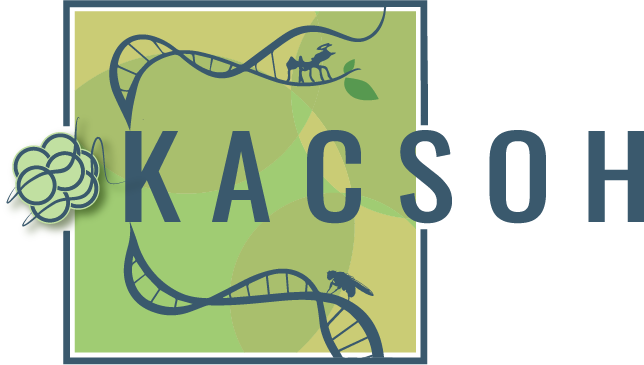Holding a newly eclosed Atta cephalotes super major
At the 59th Annual Drosophila Research Conference, Philadelphia, PA, 2018
Invited talk at Symposium on Biomathematics and Ecology, Education and Research. Normal, Illinois. 2017
Chromatin, Epigenetics & Transcription. Cold Spring Harbor, Asia. Suzhou, China
Drosophila Species Workshop, UCSD, CA. 2012
Examining behavior of Atta cephalotes
About
My name is Balint Zoltan Kacsoh. I was raised in the beautiful capital of Hungary, Budapest, and in Macon, GA. From a young age, I was fascinated by biology--whether it be going to the aquarium and the zoo, to biology class--I wanted to understand how organisms function. My father, also Balint Kacsoh (https://medicine.mercer.edu/research/macon/faculty-research/researchers/bailintkacsoh.cfm), brought me to his research lab at Mercer University School of Medicine, where I was able to keep my own cell cultures and "help" run experiments as young as age 8. Throughout lower, middle, and highschool, my favorite subject was science. I even sought more rare classes to take, such as Genetics and Advanced Topics in Science. Thus, I was science primed and I pursued a scientific career to identify the molecular and genetic mechanisms governing organismal output.
I received my BS/MS from Emory University under the guidance of Dr. Todd Schlenke and Dr. Nathan T. Mortimer. I am currently a Ph.D. candidate in the lab of Dr. Giovanni Bosco at the Geisel School of Medicine at Dartmouth College. I am interested in asking the big picture question of what are the governing factors that contribute to the behavior of an organism. I suggest that behavior is observable on the cellular and organismal level. To answer this approach to behavior, I employ neuro, genetic, behavioral, and bioinformatic approaches.
As an undergraduate student at Emory University, under the mentorship of Dr. Nathan Mortimer and Todd Schlenke, I studied the physiological and behavioral immune response of Drosophila melanogaster (fruit fly) and other Drosophilids in the genus Drosophila in response to predatory wasps. We uncovered physiological mechanisms of Drosophila larvae allowing successful immune responses in addition to uncovering novel wasp venom components. We also uncovered multiple unique behavioral responses of adult Drosophila to the predatory wasps.
As a graduate student at the Geisel School of Medicine at Dartmouth under the supervision of Dr. Giovanni Bosco (http://boscogeneticslab.com/), my primary studies were on learning, memory, and social behavior in Drosophila melanogaster (the fruit fly) and the effects of age on these processes. For learning and memory, we utilized an ecologically relevant stimulus (a predatory wasp), to elicit a non-associative memory, that we analyzed for decay following exposure across time. Using this assay, we find an age dependent decline of memory maintenance, responsible in part due to changes in the mushroom body, the learning and memory center of the fly brain. For social behaviors, we find that flies exposed to predators engage in social interactions whereby naive flies learn and remember as if they had seen the predator. We have proposed that this social behavior constitutes a fly “language” and have observed both intraspecies and interspecies communication to exist throughout the genus Drosophila.
I believe that the interplay of neurobiology and the social sciences is a critical region of study, termed “sociogenetics.” With more and more precise molecular and neurogenetic tools, we are to better understand and define the relevant differences between a variety of social orders. In 1975, E.O. Wilson accurately predicted that a split in these two disciplines would occur primarily based on mechanistic/molecular approaches and evolution/ecological approaches. Sociality exists across many branches of the tree of life and is thought to encompass a spectrum of behaviors. But is there a single criterion that is truly suggestive of all forms of sociality? E.O Wilson suggested that the common denominator of sociality is the ability to communicate, stating: “the terms society and social must be defined quite broadly in order to prevent arbitrary exclusion of many interesting phenomenon” (Wilson 1971). In particular, I view sociality as the degree to which individuals tend be gregarious, or associate in social settings, and form cooperative groups that ultimately increase the survival and fitness of the individuals.
My postdoc work is driven by the following questions: What influences these behaviors on the molecular level? How do experiences shape our genetic information? This remains unknown and my long-term goal is to answer these questions using the more fluid reproductive plasticity present in ponerine ants such as Harpegnathos saltator, where I am studying the epigenetic effects of caste identity as a function of social environment. I am also utilizing Camponotus floridanus as a means to study the effect of social interaction on epigenetics, lifespan, and physiology. Finally, I am utilizing Atta cephalotes as a model to dissect epigenetic regulation of caste determination and behavior in an advanced social system.
In ants, bees, wasps, Drosophila, and other insects, we are privileged to not only see how complex societies evolve independently of humans, but also to dissect, with ever increasing clarity, the relationship between advanced social order, the forces of natural selection that shaped them, and the underlying neuro-genetic, epigenetic, and genetic mechanisms that guide these behaviors. We have only just arrived at the boundary between insect behavioral neuro-genetics, evolution and ecology, and sociobiology. These findings and studies could have fruitful vertical integration to humans when asking about the genetics of sociality.








